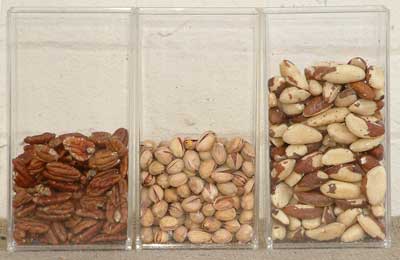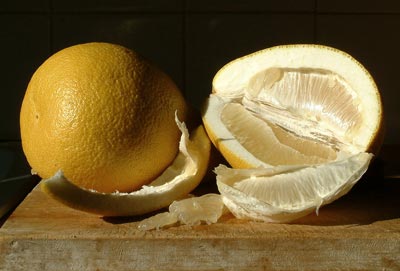
Plantain. An unripe, green banana. This is a starchy type of banana with firm flesh. If it is the variety used for desserts it is cooked when it is green, but it is left to ripen if it is the less sweet type. It is a staple food in many tropical and sub-tropical parts of the world.

Pistachio nut. The fruits of a small tree which originated in Central Asia, probably eastern Syria, but which is now widely cultivated. Just before harvest pistachios are enclosed in a green and magenta fleshy cover. These are the very best, if you can get them. However, fresh pistachios are rarely seen, mainly because they have a short shelf-life. They are usually hulled and dried, after which they are either roasted or roasted and salted. For cooking use the ones which are not already salted. They are sold in their creamy beige shells, which split as they ripen. The shells should be removed and the purple papery skins rubbed off revealing the bright green kernels within, the greener the better. They are related to both the cashew and the mango.
Zope or blue bream, found in basins of the North Sea, Baltic, Black Sea, Azov and Caspian Seas and inhabiting the lower reaches of large rivers feeding mainly on plankton. In spring it migrates upstream and spawns. It is found in cold lakes in Nordic countries.
Roach. A small freshwater fish similar to carp. It has many bones, which discourage most people from eating them.
Pollack. A member of the cod family found in the eastern and north Atlantic and weighing around 1 kg (2 lb). It is dark green above and has a protruding lower jaw. They have rather grey, flaky flesh and are often salted and dried or pickled and are also commonly used for making imitation shellfish foods. Treat is as you would cod. I have heard that Somerville and Ross, in the Irish RM, describe pollock as tasting like cotton-wool with pins in it.

Pomelo. A citrus fruit similar in appearance to a grapefruit with one slightly pointed end. Once the thick skin is peeled, the segments need to have the tough leathery coating pulled away. Inside, the flesh can be deliciously sweet and juicy. It is better left for a few days after picking before it is eaten. There are pink and white versions. Is sometimes used in salads and savoury dishes.